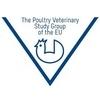Limited Emergence of Salmonella enterica Serovar Infantis Variants with Reduced Phage Susceptibility in PhagoVet-Treated Broilers
Author details:






1. European Food Safety Authority; European Centre for Disease Prevention and Control. The European Union One Health 2021 Zoonoses Report. EFSA J. 2022, 20, e07666. [CrossRef]
2. European Food Safety Authority (EFSA); European Centre for Disease Prevention and Control (ECDC). The European Union One Health 2022 Zoonoses Report. EFSA J. 2023, 21, e8442. [CrossRef]
3. Proietti, P.C.; Stefanetti, V.; Musa, L.; Zicavo, A.; Dionisi, A.M.; Bellucci, S.; Mensa, A.; Menchetti, L.; Branciari, R.; Ortenzi, R.; et al. Genetic profiles and antimicrobial resistance patterns of Salmonella Infantis strains isolated in Italy in the food chain of broiler meat production. Antibiotics 2020, 9, 814. [CrossRef]
4. Gymoese, P.; Kiil, K.; Torpdahl, M.; Østerlund, M.T.; Sørensen, G.; Olsen, J.E.; Nielsen, E.M.; Litrup, E. WGS based study of the population structure of Salmonella enterica serovar Infantis. BMC Genom. 2019, 20, 870. [CrossRef] [PubMed]
5. Jovˇci´c, B.; Novovi´ c, K.; Filipi´ c, B.; Velhner, M.; Todorovi´c, D.; Matovi´c, K.; Raši´ c, Z.; Nikoli´ c, S.; Kiškarolj, F.; Koji´ c, M. Genomic characteristics of colistin-resistant Salmonella enterica subsp. enterica serovar Infantis from poultry farms in the republic of Serbia. Antibiotics 2020, 9, 886. [CrossRef]
6. Lapierre, L.; Cornejo, J.; Zavala, S.; Galarce, N.; Sánchez, F.; Benavides, M.B.; Guzmán, M.; Sáenz, L. Phenotypic and genotypic characterization of virulence factors and susceptibility to antibiotics in Salmonella Infantis strains isolated from chicken meat: First Findings in Chile. Animals 2020, 10, 1049. [CrossRef]
7. Mughini-Gras, L.; van Hoek, A.H.A.M.; Cuperus, T.; Dam-Deisz, C.; van Overbeek, W.; Van den Beld, M.; Wit, B.; Rapallini, M.; Wullings, B.; Franz, E.; et al. Prevalence, risk factors and genetic traits of Salmonella Infantis in Dutch broiler flocks. Vet. Microbiol. 2021, 258, 109120. [CrossRef] [PubMed]
8. Alba, P.; Leekitcharoenphon, P.; Carfora, V.; Amoruso, R.; Cordaro, G.; Di Matteo, P.; Ianzano, A.; Iurescia, M.; Diaconu, E.L.; ENGAGE-EURL-ARNetworkStudyGroup; et al. Molecular epidemiology of Salmonella Infantis in Europe: Insights into the success of the bacterial host and its parasitic pESI-like megaplasmid. Microb. Genom. 2020, 6, e000365. [CrossRef]
9. Pardo-Esté, C.; Lorca, D.; Castro-Severyn, J.; Krüger, G.; Alvarez-Thon, L.; Zepeda, P.; Sulbaran-Bracho, Y.; Hidalgo, A.; Tello, M.; Molina, F.; et al. Genetic characterization of Salmonella Infantis with multiple drug resistance profiles isolated from poultry-farm in Chile. Microorganisms 2021, 9, 2370. [CrossRef]
10. Clavijo, V.; Flórez, M.J.V. The gastrointestinal microbiome and its association with the control of pathogens in broiler chicken production: A review. Poult. Sci. 2018, 97, 1006–1021. [CrossRef]
11. Thanki, A.M.; Hooton, S.; Gigante, A.M.; Atterbury, R.J.; Clokie, M.R.J. Potential Roles for bacteriophages in reducing Salmonella from poultry and swine. In Salmonella spp. a Global Challenge; Lamas, A., Regal, P., Franco, C.M., Eds.; IntechOpen: London, UK, 2021; ISBN 978-1-83969-018-1.
12. Mangalea, M.R.; Duerkop, B.A. Fitness Trade-offs resulting from bacteriophage resistance potentiate synergistic antibacterial strategies. Infect. Immun. 2020, 88, e00926-19. [CrossRef] [PubMed]
13. Egido, J.E.; Costa, A.R.; Aparicio-Maldonado, C.; Haas, P.J.; Brouns, S.J.J. Mechanisms and clinical importance of bacteriophage resistance. FEMS Microbiol. Rev. 2022, 46, fuab048. [CrossRef] [PubMed]
14. 14. Kutter, E. Phage host range and efficiency of plating. Methods Mol. Biol. 2009, 501, 141–149. [CrossRef] [PubMed]
15. Bardina, C.; Spricigo, D.A.; Cortés, P.; Llagostera, M. Significance of the bacteriophage treatment schedule in reducing Salmonella colonization of poultry. Appl. Environ. Microbiol. 2012, 78, 6600–6607. [CrossRef] [PubMed]
16. Sambrook, J.; Russell, D.W. Molecular Cloning: A Laboratory Manual, 3rd ed.; Cold Spring Harbor Laboratory Press: New York, NY, USA, 2001; Volume 1.
17. Compeau,P.E.; Pevzner, P.A.; Tesler, G. How to apply de Bruijn graphs to genome assembly. Nat. Biotechnol. 2011, 29, 987–991. [CrossRef] [PubMed]
18. Overbeek, R.; Olson, R.; Pusch, G.D.; Olsen, G.J.; Davis, J.J.; Disz, T.; Edwards, R.A.; Gerdes, S.; Parrello, B.; Shukla, M.; et al. The SEEDandthe Rapid Annotation of microbial genomes using Subsystems Technology (RAST). Nucleic Acids Res. 2014, 42, D206–D214. [CrossRef]
19. Darling, A.E.; Mau, B.; Perna, N.T. ProgressiveMauve: Multiple genome alignment with gene gain, loss and rearrangement. PLoS ONE2010, 5, e11147. [CrossRef]
20. Atschul, S.F.; Gish, W.; Miller, W.; Myers, E.W.; Lipman, D.J. Basic local alignment search tool. J. Mol. Biol. 1990, 215, 403–410. [CrossRef] [PubMed]
21. Huerta-Cepas, J.; Szklarczyk, D.; Heller, D.; Hernández-Plaza, A.; Forslund, S.K.; Cook, H.; Mende, D.R.; Letunic, I.; Rattei, T.; Jensen, L.J.; et al. eggNOG 5.0: A hierarchical, functionally and phylogenetically annotated orthology resource based on 5090 organisms and 2502 viruses. Nucleic Acids Res. 2019, 47, D309–D314. [CrossRef]
22. Liu, B.; Zheng, D.; Jin, Q.; Chen, L.; Yang, J. VFDB 2019: A comparative pathogenomic platform with an interactive web interface. Nucleic Acids Res. 2019, 47, D687–D692. [CrossRef] [PubMed]
23. Bortolaia, V.; Kaas, R.S.; Ruppe, E.; Roberts, M.C.; Schwarz, S.; Cattoir, V.; Philippon, A.; Allesoe, R.L.; Rebelo, A.R.; Florensa, A.F.; et al. ResFinder 4.0 for predictions of phenotypes from genotypes. J. Antimicrob. Chemother. 2020, 75, 3491–3500. [CrossRef] [PubMed]
24. Alcock, B.P.; Raphenya, A.R.; Lau, T.T.Y.; Tsang, K.K.; Bouchard, M.; Edalatmand, A.; Huynh, W.; Nguyen, A.; Cheng, A.A.; Liu, S.; et al. CARD 2020: Antibiotic resistome surveillance with the comprehensive antibiotic resistance database. Nucleic Acids Res. 2020, 48, D517–D525. [CrossRef]
25. Moraru, C.; Varsani, A.; Kropinski, A.M. VIRIDIC-A novel tool to calculate the intergenomic similarities of prokaryote-infecting viruses. Viruses 2020, 12, 1268. [CrossRef]
26. Real Decreto 53/2013, De 1 de Febrero, Por El Que Se Establecen Las Normas Básicas Aplicables Para La Protección de Los Animales Utilizados en Experimentación y Otros Fines Científicos, Incluyendo La Docencia. BOE-A-2013-1337. Available online: https://www.boe.es/eli/es/rd/2013/02/01/53 (accessed on 11 July 2024).
27. Chan,R.K.; Botstein, D.; Watanabe, T.; Ogata, Y. Specialized transduction of tetracycline resistance by phage P22 in Salmonella Typhimurium. II. Properties of a high-frequency-transducing lysate. Virology 1972, 50, 883–898. [CrossRef]
28. López-Pérez, J.; Otero, J.; Sánchez-Osuna, M.; Erill, I.; Cortés, P.; Llagostera, M. Impact of mutagenesis and lateral gene transfer processes in bacterial susceptibility to phage in food biocontrol and phage therapy. Front. Cell. Infect. Microbiol. 2023, 13, 1266685. [CrossRef]
29. ISO-ISO/TS 6579-2:2012; Microbiology of Food and Animal Feed-Horizontal Method for the Detection, Enumeration and Serotyping of Salmonella—Part 2: Enumeration by a Miniaturized Most Probable Number Technique. ISO: Geneva, Switzerland, 2012. Available online: https://www.iso.org/standard/56713.html (accessed on 11 July 2024).
30. Bardina, C.; Colom, J.; Spricigo, D.A.; Otero, J.; Sánchez-Osuna, M.; Cortés, P.; Llagostera, M. Genomics of three new bacterio phages useful in the biocontrol of Salmonella. Front. Microbiol. 2016, 7, 545. [CrossRef]
31. Streisinger, G.; Emrich, J.; Stahl, M.M. Chromosome structure in phage T4, iii. Terminal redundancy and length determination. Proc. Natl. Acad. Sci. USA 1967, 57, 292–295. [CrossRef]
32. Lim, T.H.; Kim, M.S.; Lee, D.H.; Lee, Y.N.; Park, J.K.; Youn, H.N.; Lee, H.J.; Yang, S.Y.; Cho, Y.W.; Lee, J.B.; et al. Use of bacteriophage for biological control of Salmonella Enteritidis infection in chicken. Res. Vet. Sci. 2012, 93, 1173–1178. [CrossRef] [PubMed]
33. Thanki, A.M.; Hooton, S.; Whenham, N.; Salter, M.G.; Bedford, M.R.; O’Neill, H.V.M.; Clokie, M.R.J. A bacteriophage cocktail delivered in feed significantly reduced Salmonella colonization in challenged broiler chickens. Emerg. Microbes Infect. 2023, 12, 2217947. [CrossRef]
34. Kosznik-Kwa´snicka, K.; Podlacha, M.; Grabowski, Ł.; Stasiłoj´ c, M.; Nowak-Zaleska, A.; Ciemi´nska, K.; Cyske, Z.; Dydecka, A.; Gaffke, L.; Mantej, J.; et al. Biological aspects of phage therapy versus antibiotics against Salmonella enterica serovar Typhimurium infection of chickens. Front. Cell. Infect. Microbiol. 2022, 12, 941867. [CrossRef] [PubMed]
35. Hume,M.E.; Nisbet, D.J.; Scanlan, C.M.; Corrier, D.E.; De Loach, J.R. Fermentation of radiolabelled substrates by batch cultures of caecal microflora maintained in a continuous-flow culture. J. Appl. Bacteriol. 1995, 78, 677–683. [CrossRef] [PubMed]
36. Hurley, A.; Maurer, J.J.; Lee, M.D. Using bacteriophages to modulate Salmonella colonization of the chicken’s gastrointestinal tract: Lessons learned from in silico and in vivo modeling. Avian Dis. 2008, 52, 599–607. [CrossRef] [PubMed]
37. Bjerrum, L.; Engberg, R.M.; Pedersen, K. Infection models for Salmonella Typhimurium DT110 in day-old and 14-day-old broiler chickens kept in isolators. Avian Dis. 2003, 47, 1474–1480. [CrossRef] [PubMed]
38. Oechslin, F. Resistance development to bacteriophages occurring during bacteriophage therapy. Viruses 2018, 10, 351. [CrossRef]
39. Atterbury, R.J.; Van Bergen, M.A.; Ortiz, F.; Lovell, M.A.; Harris, J.A.; De Boer, A.; Wagenaar, J.A.; Allen, V.M.; Barrow, P.A. Bacteriophage therapy to reduce Salmonella colonization of broiler chickens. Appl. Environ. Microbiol. 2007, 73, 4543–4549. [CrossRef]
40. Gao,D.; Ji, H.; Wang, L.; Li, X.; Hu, D.; Zhao, J.; Wang, S.; Tao, P.; Li, X.; Qian, P. Fitness Trade-Offs in phage cocktail-resistant Salmonella enterica Serovar Enteritidis results in increased antibiotic susceptibility and reduced virulence. Microbiol. Spectr. 2022, 10, e0291422. [CrossRef]

























